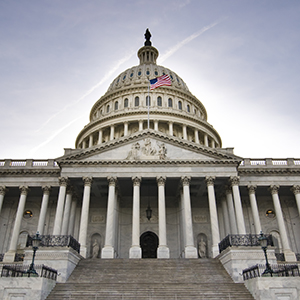
FEDERAL GOVERNMENT RELATIONS
CFPB Issues Blog Post Criticizing NSF Fees
The Consumer Financial Protection Bureau on Wednesday issued a blog post that criticized banks that charge nonsufficient funds fees. The CFPB listed by name banks that have announced they are eliminating NSF fees and banks that have not made an announcement as of April 1. The CFPB also stated that it is “closely scrutinizing whether and when charging these fees may be unlawful.”
Hsu Advocates for Bank-like Regulation for Stablecoins
Acting Comptroller of the Currency Michael Hsu last Friday called for establishing an “intentional architecture” for stablecoins that would focus on “stability, interoperability and separability” and also take into account privacy, security and the need to prevent illicit finance. Speaking at an industry event, Hsu suggested that well-regulated bank-issued stablecoins may be preferable to a central bank digital currency as policymakers consider supporting the U.S. dollar’s international role. He noted that the nation’s current bank-centric model is “not an accident. It is the result of a carefully architected monetary and banking system [which] has supported the role of the U.S. dollar as the world’s reserve currency.”
Hsu also appeared to express a preference for a bank-like “fixed set of safety and soundness-like requirements” that would apply to all stablecoin issuers – as opposed to offering a wider set of licensing options. “[T]he wider the variability, the more likely a risky issuer blows itself up, sparking contagion across peers,” he cautioned.
Additionally, there is a need for interoperability among U.S. dollar-based stablecoins, he said, noting that “in the long-run, interoperability between stablecoins and with the dollar – including a CBDC –would help ensure openness and inclusion. It would also help facilitate broader use of the U.S. dollar – not a particular corporate-backed stablecoin – as the base currency for trade and finance in a blockchain-based digital future.”
Finally, Hsu raised the issue if intraday liquidity risk if banks were to being transacting in both traditional payments and blockchain-based payments. To address this problem, he floated the idea of “requir[ing] that blockchain-based activities, such as stablecoin issuance, be conducted in a standalone bankchartered entity, separate from any other insured depository institution subsidiary and other regulated affiliates. Additional safeguards could be considered, including enhancements to restrictions on interaffiliate transactions applicable to IDIs,” he added.
Regulators Propose Update to Uniform Practice and Procedural Rules
The regulatory agencies have issued a request for comment on an interagency proposal to modernize its uniform rules of practice and procedure to align with current practices and technology advancements. Comments will be accepted for 60 days after publication in the Federal Register.